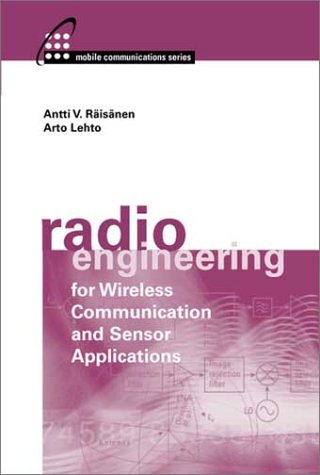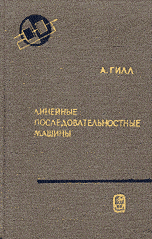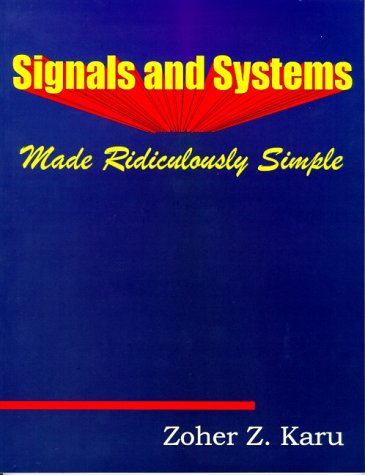Antti V. Raisanen, Arto Lehto1-58053-542-9, 9781580535427
Table of contents :
Radio Engineering for Wireless
Communication and Sensor
Applications……Page 4
Copyright……Page 5
Contents……Page 8
Preface……Page 16
Acknowledgments……Page 18
1.1 Radio Waves as a Part of the Electromagnetic Spectrum……Page 20
1.3 Allocation of Radio Frequencies……Page 23
1.4 History of Radio Engineering from Maxwell to the Present……Page 25
2.1 Maxwell¡¯s Equations……Page 30
2.1.1 Maxwell¡¯s Equations in Case of Harmonic Time Dependence……Page 33
2.1.2 Interpretations of Maxwell¡¯s Equations……Page 34
2.2 Fields in Media……Page 36
2.3 Boundary Conditions……Page 39
2.4 Helmholtz Equation and Its Plane Wave Solution……Page 41
2.5 Polarization of a Plane Wave……Page 45
2.6 Reflection and Transmission at a Dielectric Interface……Page 47
2.7 Energy and Power……Page 50
3 Transmission Lines and Waveguides……Page 54
3.1 Basic Equations for Transmission Lines and Waveguides……Page 57
3.2 Transverse Electromagnetic Wave Modes……Page 59
3.3 Transverse Electric and Transverse Magnetic Wave Modes……Page 61
3.4.1 TE Wave Modes in Rectangular Waveguide……Page 63
3.4.2 TM Wave Modes in Rectangular Waveguide……Page 69
3.5 Circular Waveguide……Page 71
3.6 Optical Fiber……Page 75
3.7 Coaxial Line……Page 77
3.8 Microstrip Line……Page 80
3.9 Wave and Signal Velocities……Page 84
3.10 Transmission Line Model……Page 85
4.1 Reflection from a Mismatched Load……Page 88
4.2 Smith Chart……Page 93
4.3 Matching Methods……Page 97
4.3.1 Matching with Lumped Reactive Elements……Page 98
4.3.2 Matching with Tuning Stubs ( with Short Sections of Line)……Page 105
4.3.3 Quarter- Wave Transformer……Page 108
4.3.4 Resistive Matching……Page 113
5.1 Impedance and Admittance Matrices……Page 116
5.2 Scattering Matrices……Page 120
5.3 Signal Flow Graph, Transfer Function, and Gain……Page 123
5.3.1 Mason¡¯s Rule……Page 128
5.3.2 Gain of a Two- Port……Page 130
6 Passive Transmission Line and Waveguide
Devices……Page 134
6.1 Power Dividers and Directional Couplers……Page 135
6.1.1 Power Dividers……Page 136
6.1.2 Coupling and Directivity of a Directional Coupler……Page 138
6.1.3 Scattering Matrix of a Directional Coupler……Page 139
6.1.4 Waveguide Directional Couplers……Page 141
6.1.5 Microstrip Directional Couplers……Page 143
6.2.1 Properties of Ferrite Materials……Page 147
6.2.2 Faraday Rotation……Page 150
6.2.3 Isolators……Page 152
6.3 Other Passive Components and Devices……Page 153
6.3.1 Terminations……Page 154
6.3.2 Attenuators……Page 155
6.3.4 Connectors and Adapters……Page 157
7.1 Resonators……Page 160
7.1.2 Quality Factor……Page 161
7.1.3 Coupled Resonator……Page 163
7.1.4 Transmission Line Section as a Resonator……Page 166
7.1.5 Cavity Resonators……Page 168
7.1.6 Dielectric Resonators……Page 172
7.2 Filters……Page 173
7.2.1 Insertion Loss Method……Page 174
7.2.2 Design of Microwave Filters……Page 180
7.2.3 Practical Microwave Filters……Page 185
8.1 From Electron Tubes to Semiconductor Devices……Page 190
8.2.1 Diodes……Page 191
8.2.2 Transistors……Page 196
8.3 Oscillators……Page 199
8.4.1 Design of Small- Signal and Low- Noise Amplifiers……Page 203
8.4.2 Effect of Nonlinearities and Design of Power Amplifiers……Page 210
8.4.3 Reflection Amplifiers……Page 211
8.5 Frequency Converters ( Mixers) and Frequency Multipliers……Page 212
8.5.1 Mixers……Page 213
8.5.2 Frequency Multipliers……Page 216
8.6 Detectors……Page 217
8.7 Monolithic Microwave Circuits……Page 220
9.1 Fundamental Concepts of Antennas……Page 224
9.2 Calculation of Radiation from Antennas……Page 231
9.3 Radiating Current Element……Page 233
9.4 Dipole and Monopole Antennas……Page 236
9.5 Other Wire Antennas……Page 241
9.6 Radiation from Apertures……Page 244
9.7 Horn Antennas……Page 251
9.8 Reflector Antennas……Page 253
9.9 Other Antennas……Page 255
9.10 Antenna Arrays……Page 258
9.12 Link Between Two Antennas……Page 261
10.1 Environment and Propagation Mechanisms……Page 266
10.2 Tropospheric Attenuation……Page 268
10.3 Bending ( Refraction) of Radio Waves in Troposphere……Page 271
10.4 LOS Path……Page 274
10.5 Reflection from Ground……Page 276
10.6 Multipath Propagation in Cellular Mobile Radio Systems……Page 279
10.7 Propagation Aided by Scattering: Scatter Link……Page 282
10.8 Propagation via Ionosphere……Page 284
10.9 Propagation as a Ground ( Surface) Wave……Page 286
11.1 Transmitters and Receivers……Page 290
11.2.1 Receiver Noise……Page 294
11.2.2 Antenna Noise Temperature……Page 303
11.3 Modulation and Demodulation of Signals……Page 306
11.3.1 Analog Modulation……Page 307
11.3.2 Digital Modulation……Page 316
11.4 Radio Link Budget……Page 323
12.1 Broadcasting……Page 326
12.1.1 Broadcasting in Finland……Page 327
12.1.2 Broadcasting Satellites……Page 329
12.2.1 Terrestrial Radio Links……Page 331
12.3 Wireless Local Area Networks……Page 333
12.4 Mobile Communication……Page 336
12.5.1 Hyperbolic Radionavigation Systems……Page 339
12.5.2 Satellite Navigation Systems……Page 342
12.5.3 Navigation Systems in Aviation……Page 345
12.6.1 Pulse Radar……Page 347
12.6.2 Doppler Radar……Page 351
12.6.3 Frequency- Modulated Radar……Page 353
12.6.4 Surveillance and Tracking Radars……Page 354
12.7 Remote Sensing……Page 355
12.7.1 Radiometry……Page 356
12.7.2 Total Power Radiometer and Dicke Radiometer……Page 359
12.7.3 Remote- Sensing Radar……Page 362
12.8 Radio Astronomy……Page 364
12.8.1 Radio Telescopes and Receivers……Page 365
12.8.2 Antenna Temperature of Radio Sources……Page 368
12.8.3 Radio Sources in the Sky……Page 369
12.9 Sensors for Industrial Applications……Page 372
12.9.2 Resonators……Page 373
12.9.4 Radar Sensors……Page 374
12.10 Power Applications……Page 375
12.11 Medical Applications……Page 376
12.11.1 Thermography……Page 377
12.12 Electronic Warfare……Page 378
12.12.2 EA……Page 379
12.12.3 EP……Page 380
13 Biological Effects and Safety Standards……Page 382
Appendix A: Vector Operations……Page 386
Appendix B: Physical Constants and
Material Parameters……Page 390
List of Acronyms……Page 392
About the Authors……Page 398
Index……Page 400







Reviews
There are no reviews yet.